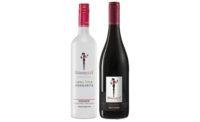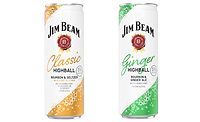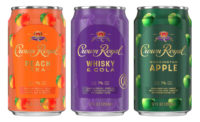In the 1995 romantic comedy “Clueless,” Beverly Hills teenager Cher Horowitz is a fashion icon. She’s glitzy, glamorous and a bit ditzy. Cher has so many clothes and so many potential outfit options, her closet has a computer system that helps her go through her wardrobe and generate outfit ideas.
In today’s beverage market, consumers have a seemingly endless sea of seltzers and ready-to-drink (RTD) cocktails from which to choose. If only there was a system like that of Cher’s closet to help consumers decide on which seltzers and RTD cocktails to drink.
Brian Sudano, managing partner of Beverage Marketing Corporation (BMC), New York, notes that the overall spirit and beer seltzer markets, combined, are declining. He suspects that the market will stabilize moving into the second half of the year.
“A little consumer fatigue from the sheer number of historic innovations and strength of brands, like Twisted Tea, had an impact on 2023 trends,” Sudano says. “However, some of these are working through the marketplace, and this headwind will begin to moderate by the end of 2023.”
Liz Paquette, head of consumer insights at Boston-based Drizly, explains that the share for hard seltzers on Drizly has slowed “after years of high-paced growth,” however; it’s important to note that on Drizly, hard seltzer is defined as a flavored malt beverage, so it is considered as a subcategory within the beer category.
“In 2023 to date, hard seltzer holds 2.5% share on Drizly overall and 17% share within the beer category,” she says. “This is a decrease from the same time period in 2022, wherein hard seltzer held 2.9% share on Drizly overall and 19% share within the beer category.”
In 2019, as hard seltzer held 14% of the beer category on Drizly, compared with 5% in 2018, Paquette notes that the rise continued, as hard seltzer reached a 19% share of the beer category on Drizly in 2020 and 21% in 2021.
“Over those three years of growth, hard seltzer held a 2.6% share on Drizly overall in 2019, a 3.4% share in 2020 and a 3.3% share in 2021,” she explains. “Demand for hard seltzer began to level off in 2022, holding 2.8% share of Drizly overall in 2022 and a 19% share within the beer category.”
Paquette goes on to describe how the hard seltzer category exploded.
“Over the past five years, hard seltzer grew from a relatively unknown category to one of the best-selling subcategories on Drizly,” she says. “With that popularity has come a slew of new brands, an ever-increasing number of SKUs and competition from the RTD cocktail category and spirit-based seltzers (like High Noon). After its meteoric rise, however, hard seltzer is finally showing signs of leveling out, as consumers have more options in the portable/canned drinks category, which includes products like RTDs, hard lemonade and hard iced tea.”
Back in March, Paquette says that there was a “significant shift” on Drizly when the light lager share surpassed hard seltzer as the top-selling beer subcategory since hard seltzer had taken that spot in the summer of 2019.
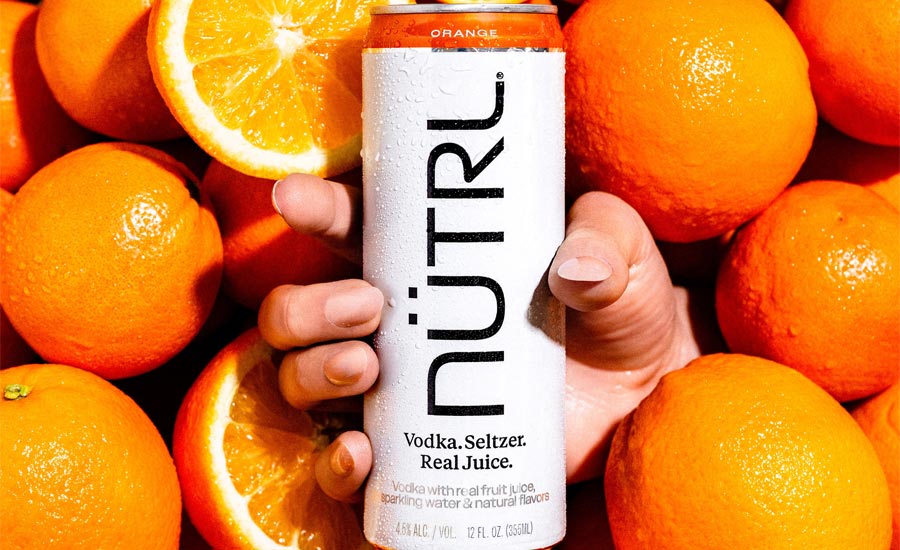
Image courtesy of Anheuser-Busch
“And in 2023 to date, light lager holds 20% share of the beer category and hard seltzer 17%, compared to the same period in 2022 wherein hard seltzer held 20% share while light lager trailed with 18%,” she explains. “This share could indicate that light lager is making a comeback, and with more options and competition in the canned and portable drinks category, some consumers may be shifting their hard seltzer consumption to other categories, like light lager and RTDs.”
The rise of ready-to-drink cocktails
In a report titled “Who is the American RTD drinker?” by NielsenIQ’s CGA, Client Solutions Director Andrew Hummel writes that the RTD consumer demographic is “rather young.” Only 16% of drinkers are above the age of 55.
And while RTD beverages are often associated with off-premise sales channels, Hummel writes that the on-premise sector is a “critical avenue for adventurous consumers seeking to engage with the category.”
In terms of the RTD cocktails market, Drizly’s Paquette notes that spirit-based canned/bottled cocktails are defined as RTDs, and are categorized as a subcategory within the spirits category.
On Drizly, in 2023 to date, RTDs hold 3% share overall, and 6.5% share within the spirits category, Paquette says.
“That means RTD cocktails now account for a larger share than hard seltzers on Drizly (with RTDs holding 3% share on Drizly, versus hard seltzer’s 2.5% share YTD),” she explains. “This continues a trend first seen on Drizly during the 2022 Memorial Day weekend, which marked the first time the RTD cocktail category surpassed the hard seltzer category.”
Further, as RTDs held 2.7% of the spirits category share on Drizly back in 2020, compared to 1.1% of the spirits category share in 2019 and 0.8% in 2018, the rise in RTDs continued, as the subcategory reached 4.2% share of the spirits category in 2021 and 5.8% share in 2022, Paquette notes.
Moreover, throughout the years of growth, Paquette points out that RTDs held a 1.1% share on Drizly overall in 2020, a 1.9% share in 2021 and a 2.7% share in 2022.
“RTDs strong growth has been driven by many factors — including consumer’s taste trends and desire for high-quality, portable cocktails, as well as flavor innovation and a shift away from hard seltzer and a preference toward spirit-based drinks, like RTDs and spirit-based seltzers, versus flavored malt beverages,” Paquette explains.
Noting that the continued growth of RTD cocktails could be due to the diversification of the RTD category, Paquette says that many of the RTD subcategories “go beyond summertime drinking” — from Margarita and Mojito RTDs, to Martini, Cosmopolitan and mixed drink RTDs.
“This range within the subcategory subsequently lends itself to different types of occasions throughout the year,” she explains. “Trends on Drizly point in the same direction, as RTDs saw year-over-year share increases in 2022 during seasons outside of spring/summer, including a 41% increase in share in October-December 2022 compared to the same time period in 2021, and a 38% increase in share in January-March 2022, versus those same months in 2021.”
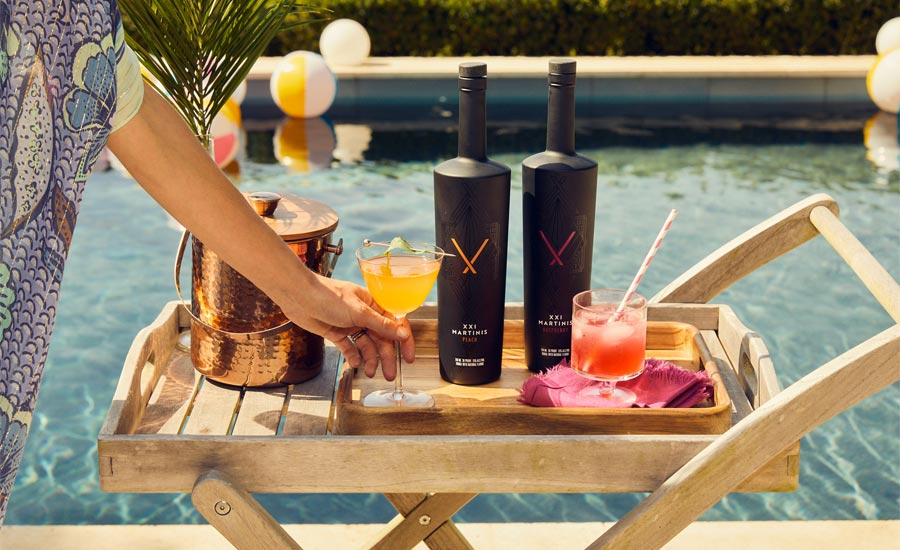
Image courtesy of XXI Martinis
Paquette adds that the growing number of RTD cocktail options available shows no signs of slowing down. Drizly saw more than 400 new RTD cocktail SKUs added to its marketplace in the past 12 months, she says.
BMC’s Sudano meanwhile notes that despite more competitors entering the market, the RTD cocktail market’s performance is concentrated on a couple brands.
“The alternative adult beverages business continues to attract consumers seeking variety and trial of new RTD alcoholic beverages, with spirit RTDs being the latest segment to accelerate innovation and distribution attracting many of these variety-seeking consumers,” he says.
Convenience is key
Although seltzer-centric beverages and RTD cocktails are influenced by convenience, experts note that flavor innovations fuels consumer interest.
BMC’s Sudano says that convenience, along with product attributes, “plays a major role” in which beverages consumers choose.
“Hard seltzer and RTD growth was, in part, driven by consumers’ desire for easy-to-enjoy, highly portable cocktails,” Drizly’s Paquette notes. “But in addiction to satisfying this need for ease and convenience, cultural significance, innovative flavor combinations and blends, increased shelf space allocation, and new brand entry helped fuel interest.”
She points to Drizly’s 2023 nationwide survey, which found respondents citing factors such as “like the taste” (64%), “easier than mixing a cocktail myself” (52%) and “like the portability” (34%) as their reasons for opting for RTDs over other beverages.
“Hard seltzers also tapped into the changing consumer preference for low-calories, refreshing alcoholic beverages with a simple ingredients list that achieved a ‘health’ halo amongst shoppers,” Paquette adds.
In NielsenIQ’s report, Hummel points to convenience as a major driver of RTD alcohol consumption, with over one third of users selecting the beverage “based on what they perceive to be a good value for money proposition.”
“When it comes to selecting an RTD, people are primarily motivated by the variety of flavors offered (28%), which reiterates the importance of having a diverse range of options available to satisfy a broad range of preferences,” the report states.
Making a mark on the market
The seltzer centric spirits market remains smaller than that of the beer/malt-based segment.
“A couple of headwinds will prevent the spirit centric seltzer market from seeing similar growth as beer/malt seltzers,” BMC’s Sudano says. “The two largest are one, lower availability due to regulatory differences, and much higher price points.”
On the other hand, RTD cocktails have been deemed a fast-growing segment. Sudano expects the growth rate to continue, but slowly.
Drizly’s Paquette says that, over the past three years, “few categories have seen more growth than RTD cocktails.” Although the category represents a smaller share of overall sales on Drizly, RTDs are continuing to see year-round share growth on the platform.
“While RTDs have seemingly followed the same blueprint as hard seltzer’s explosive trajectory over the past few years, consumers could be starting to see RTDs as a year-round staple, and not just a warm weather go-to,” she states.
On the Drizly platform, hard seltzer experienced a 278% growth in share from 2018-2020. That share dropped from 3.4% in 2020 to 2.8% in 2022. From 2019-2021, RTDs saw a growth in share of 400%, sitting at 2% share overall on Drizly in 2021. RTDs rose to 2.7% share in 2022.
“The continued growth potentially may be due to the diversification of the RTD category versus hard seltzer — this range within the subcategory subsequently lends itself to different types of occasions throughout the year, whether it’s poolside sipping, or holiday parties and tailgating,” Paquette suggests.
As more and more seltzer centric beverages emerge, the segment has felt the impact of options.
Paquette says that, until 2019, a few seltzer brands, such as White Claw and Truly, dominated sales.
“Today, White Claw is still the foremost brand, but it now has competition from brands most often associated with beer, like Bud Light and Corona, or traditional seltzer/sparkling water brands, Topo Chico and Spindrift, as well as from craft beer producers,” she explains.
Moreover, although overall growth is slowing, Paquette notes that there is continued interest in new hard seltzer brands.
“In the beer category on Drizly, hard seltzer brands Happy Dad (a newer hard seltzer brand, founded in 2021) and Spindrift (the traditional seltzer brand that got into the alcohol landscape with Spindrift Spiked) experienced the strongest year-over-year growth for the category in 2023 to date,” she says.
BMC’s Sudano suspects that the increased number of seltzer centric products has created confusion, therefore, negatively impacting the category’s performance.
As for RTD cocktails, Sudano says the most commonly used base spirits are vodka or grain-neutral spirits, because “they are the easiest to formulate flavors.”
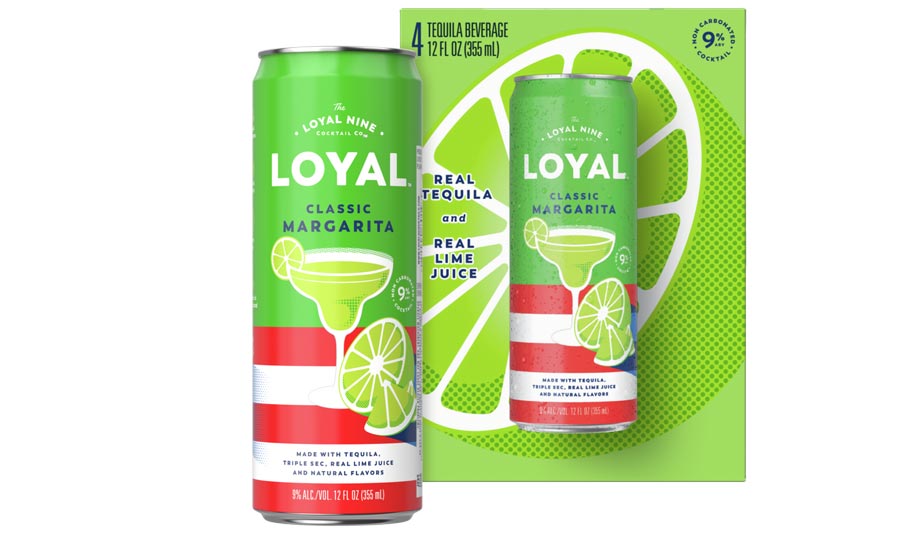
Image courtesy of Diageo Loyal Spirits Corporation
This matches data obtained by Drizly’s 2023 nationwide survey, which found that 62% of survey takers cited vodka as the preferred spirit base for RTDs, followed by tequila at 45%, rum (35%), whiskey (33%) and gin (13%).
“In 2023 to date compared to the same period last year, the fastest-growing subcategories within the RTD subcategory on Drizly are ready-to-drink martinis, daiquiris and punches,” Paquette says. “Tequila- and rum-based RTDs are the most prevalent among the fastest-growing SKUs in 2023 to date, led by options from High Noon, Cruzan, Hornitos, Casa Zul, JuneShine and Malibu.”
What’s to come for RTD cocktails and seltzer centric products
Despite slowed growth, Paquette notes that hard seltzers have established its place as a canned adult beverage. It remains within Drizly’s Top 10 subcategories on the platform overall to date, and seltzers are particularly popular in the spring and summer seasons, she says.
“And while the explosive growth may have leveled off, it’s still a drink consumers are reaching for — in fact, according to Drizly’s 2023 nationwide survey, 28% of adult respondents typically drink hard seltzer, following beer (67%), wine (66%), spirits (54%) and RTD cocktails (30%),” Paquette says. “What’s more, 49% of retailers in Drizly’s 2022 Retail Report stated that they plan to carry more hard seltzer inventory in 2023.”
Further, Drizly consumers are showing an affinity for RTDs, although the overall share of sales on the platform is “relatively small,” Paquette expresses. RTDs account for 6.2% share of the spirits category in the past 12 months, which she notes makes it the fourth-largest category behind whiskey, vodka and tequila.
“Both remain on trend with consumer needs to include low calories, refreshing, easy to drink and moderate alcohol consumption,” BMC’s Sudano says. “The future remains positive for the category to continue to outperform traditional beer, wine and spirits.”


